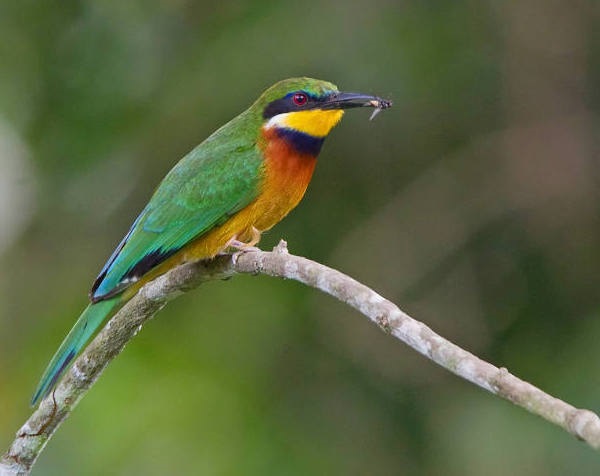Kenya has a unique and diverse array of habitat types, ranging from the snow-capped mountains at about 5000 meters above sea level, tropical lowlands, highland forests, vast savannahs, and rolling plains and grasslands to the coastal dry forests and the shores of the Indian Ocean.
Kenya is one of the most visited countries of Africa as it is renowned for its Safari opportunities. It is a country where you can see all the most famous Big Game animals in a relatively comfortable climate. The most sought-after mammals can be seen including, Wildebeast, Zebra, Oryx, Giraffe, Hippopotamus, Rhinoceros, Lion, Cheetah, Leopard, and African Buffalo as well as baboons, a variety of deer, antelope, monkeys and smaller mammals. As well as numerous smaller reptiles and amphibians, Crocodiles and African Python represent large reptiles. Moths, butterflies, beetles and dragonflies also abound.

It also has an extensive bird list and an increasing eco-tourism industry geared to birders… not least as it holds some remarkable birding sights… such as the rift valley lakes with millions of flamingos. Kenya is a birdwatcher’s paradise, teeming with birdlife, with diverse habitats, spectacular scenery and a supporting cast of the big game for which it is famous. Over 1100 bird species have been recorded in the country, and it is possible to see well over a half of these without undue effort within three or four weeks.

In the west, there are remnants of the rainforest, which used to stretch all the way to the west coast, as well as the shores of Lake Victoria, with their once-extensive papyrus beds. The Rift Valley cuts a swathe through the centre of the country, with sometimes towering cliffs, shrouded in forest, on either side. In the valley itself are the great safari plains, open in the south, and acacia-wooded in the north, with numerous lakes in between, of both fresh and soda water.

The Central Highlands rise to the east of the Rift, with the Aberdares and Mount Kenya cloaked in forest, which gives way to afro-alpine moorland towards the peaks, which provide the sight of snow on the equator. The descent to the coast is mainly acacia woodland, and finally, the coast itself is a mosaic of estuary, palm and mangrove fringed beaches and creeks, and behind these, the remnants of coastal rainforest, home to numerous endemic and near-endemic species.

The variety of birdlife is enhanced by its visibility. Vibrant Sunbirds flit from tree-to-tree, Weavers build their incredible variety of nests in the open, the Starlings shine, resplendent Widowbirds dance in the air, and bright Turacos are strangely camouflaged in the trees. Kingfishers, Rollers, Bee-eaters, Hornbills, Barbets and Woodpeckers are present in many varieties, and for a greater challenge, the Cisticolas and Greenbuls provide just that. Overhead, the sky is alive with a variety of Swifts and Swallows, and raptors are plentiful. Ground birds include several Bustards, Larks, Pipits and Gamebirds, and the cast is not complete without the wonderful sight of tens of thousands of Lesser Flamogoes on the soda lakes, and the world’s largest bird, the Ostrich.
Text Source: Fatbirder
Map Source: Googlemaps™
Photo Source: © Birding Ecotours
